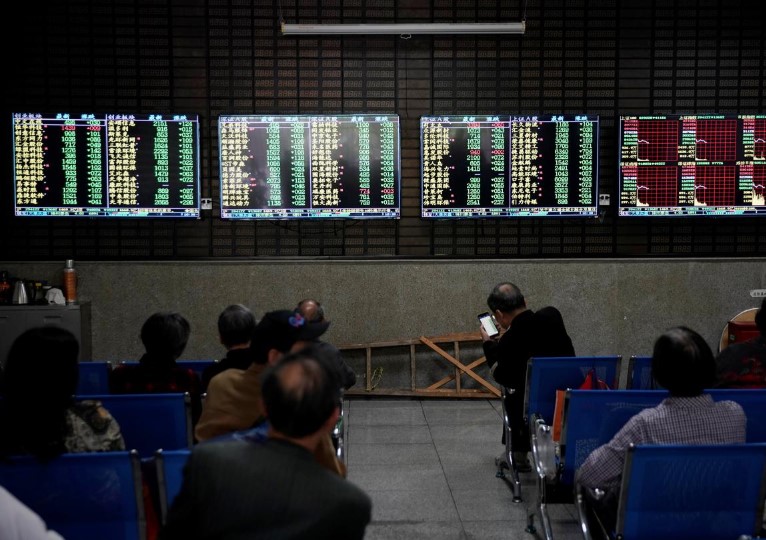
Asian shares advanced on Monday as investors breathed a sigh of relief after encouraging Chinese data suggested the world’s second-biggest economy may be starting to stabilize thanks to ramped-up stimulus from Beijing.
Second quarter economic growth slowed to 6.2% in the second quarter from a year earlier, the weakest pace in at least 27 years while separate data showed the country’s industrial output and retail sales handily topped forecasts.
The promising monthly activity data suggested a flurry of stimulus measures from China have been able to prop-up domestic activity and offset some of the damage from a protracted trade war with the United States, analysts said.
Equity markets were choppy in the wake of the Chinese data as some expected Beijing might temper further stimulus.
MSCI’s broadest index of Asia-Pacific shares outside Japan gave up losses to be 0.2% higher at 526.72 points. It fell a little more than 1% last week, snapping five straight weeks of gains.
Trading was expected to be light as Japan was shut for a public holiday.
Australian shares slipped 0.4% while South Korea’s KOSPI was mostly flat. Chinese shares pared early losses with the blue-chip index up 0.4%. Hong Kong’s Hang Seng index added 0.3%.
“Investors may be scaling back easing expectation upon today’s data as fiscal measures appear to be working,” said Westpac analyst Frances Cheung.
“That said, we believe the PBoC will still be supportive of liquidity. Expect yields to be stable and any temporary bearishness to be expressed via swaps.”
Later in the week, U.S. retail sales and industrial production data will provide more clues about the health of the world’s largest economy. The U.S. Federal Reserve will release its ‘Beige Book’ on Wednesday which investors will scour for comments on how trade tensions were affecting business outlook.
In currency markets, the Australian dollar, often played as a liquid proxy for the Chinese yuan, jumped after the data to a high of $0.7033, a level not seen since July 4.
The greenback was a tad higher at 96.871 against a basket of major currencies. The dollar index fell for three days in a row as markets fully priced in the chance of a 25-basis-point (bps) cut to U.S. interest rates. There is also a small probability of a 50 bps cut.
Against the Japanese yen, the dollar ticked up from near the lowest since early June at 108.04 while the single currency was slightly lower at $1.1267 after three successive sessions of gains.
Expectations that the Fed will keep rates supportive have sent bonds rallying with ten-year U.S. Treasuries below the current Fed rate range of 2.25%-2.50%. <0#FF:>
“Dovish Fed rhetoric has rendered a July rate cut, in the market’s eyes, as a fait accompli: it’s not if they cut but by how much,” Morgan Stanley strategist Hans Redekar told clients in a note.
Redekar said the bank was re-entering its short dollar/long yen position.
“If markets are disappointed, the yield curve would likely flatten, the USD strengthen, and financial conditions tighten. These forces would exacerbate the already considerable headwinds facing the global economy,” he added.
“Global reflation requires a weaker USD to bolster global trade and commodity prices.”
Worries about world growth and low inflation has meant investors are piling money onto bonds and money market funds, Jefferies said, citing its global asset fund flows tracker.
“The danger is that with a mountain of cash parked in money market funds any trade ceasefire would cause a huge shift away from safe assets,” said Sean Darby, Jefferies’ global equity strategist.
“Presently, investors don’t seem to be in any particular rush to buy equities – earnings revisions have yet to bottom out while economic surprises have been rare,” he added.
“The bottom line is that we would issue a pause on the risk rally.”
In commodities, U.S. crude fell31 cents to $59.90 a barrel. Brent crude was off 22 cents at $66.50.
Gold slipped to 1,410.01 an ounce, drifting away from a recent six-year top of $1,438.60.
























